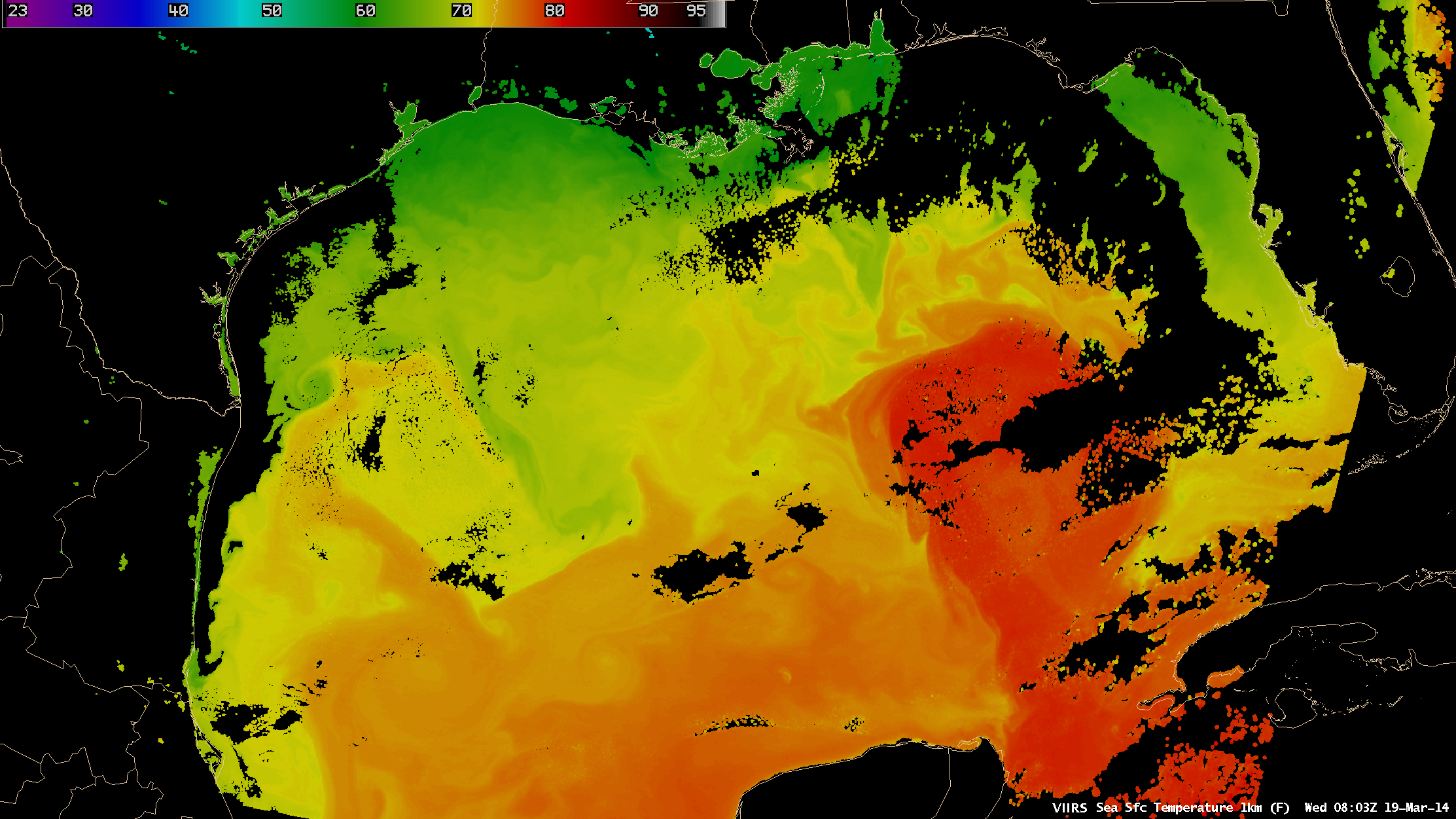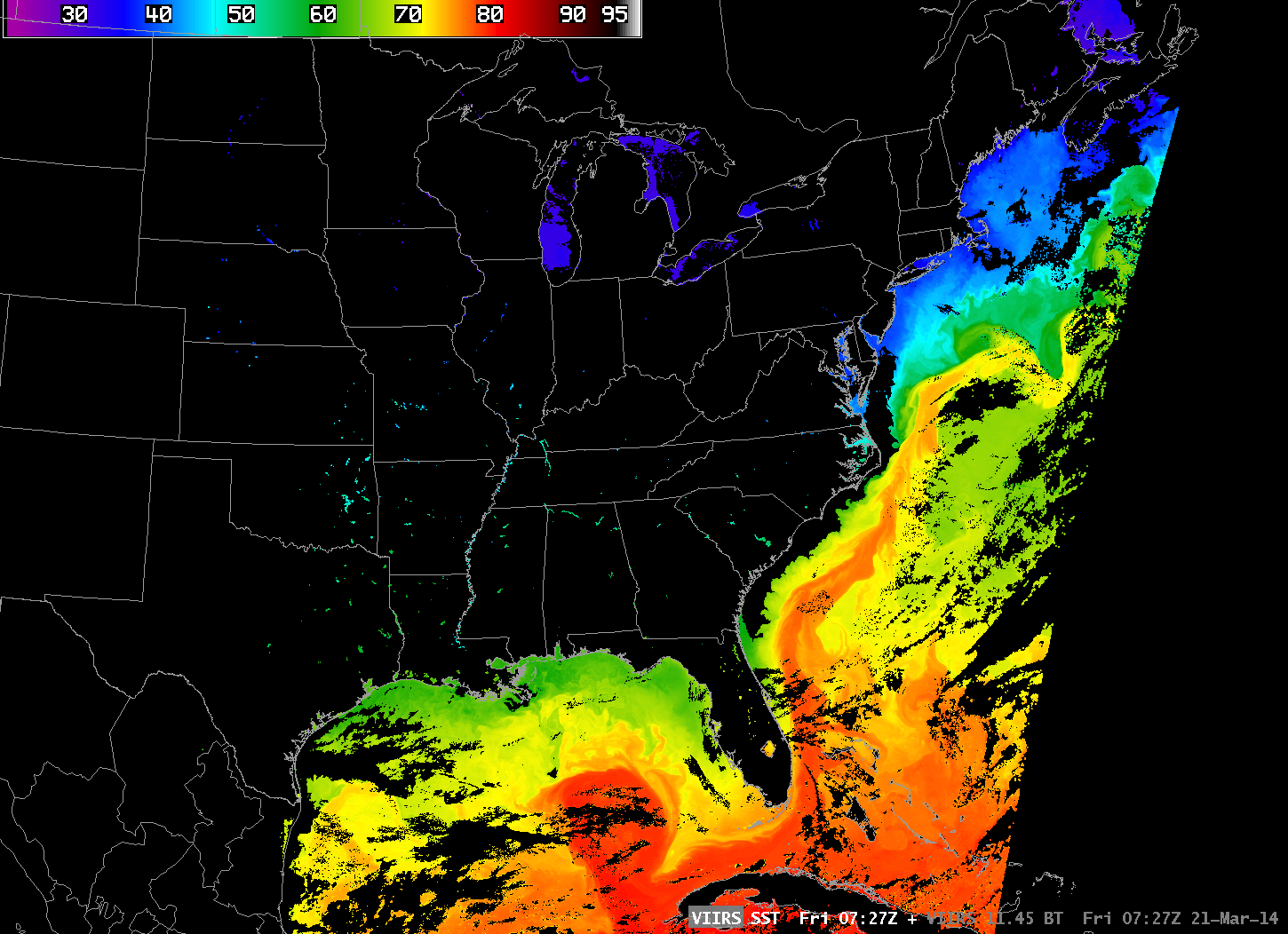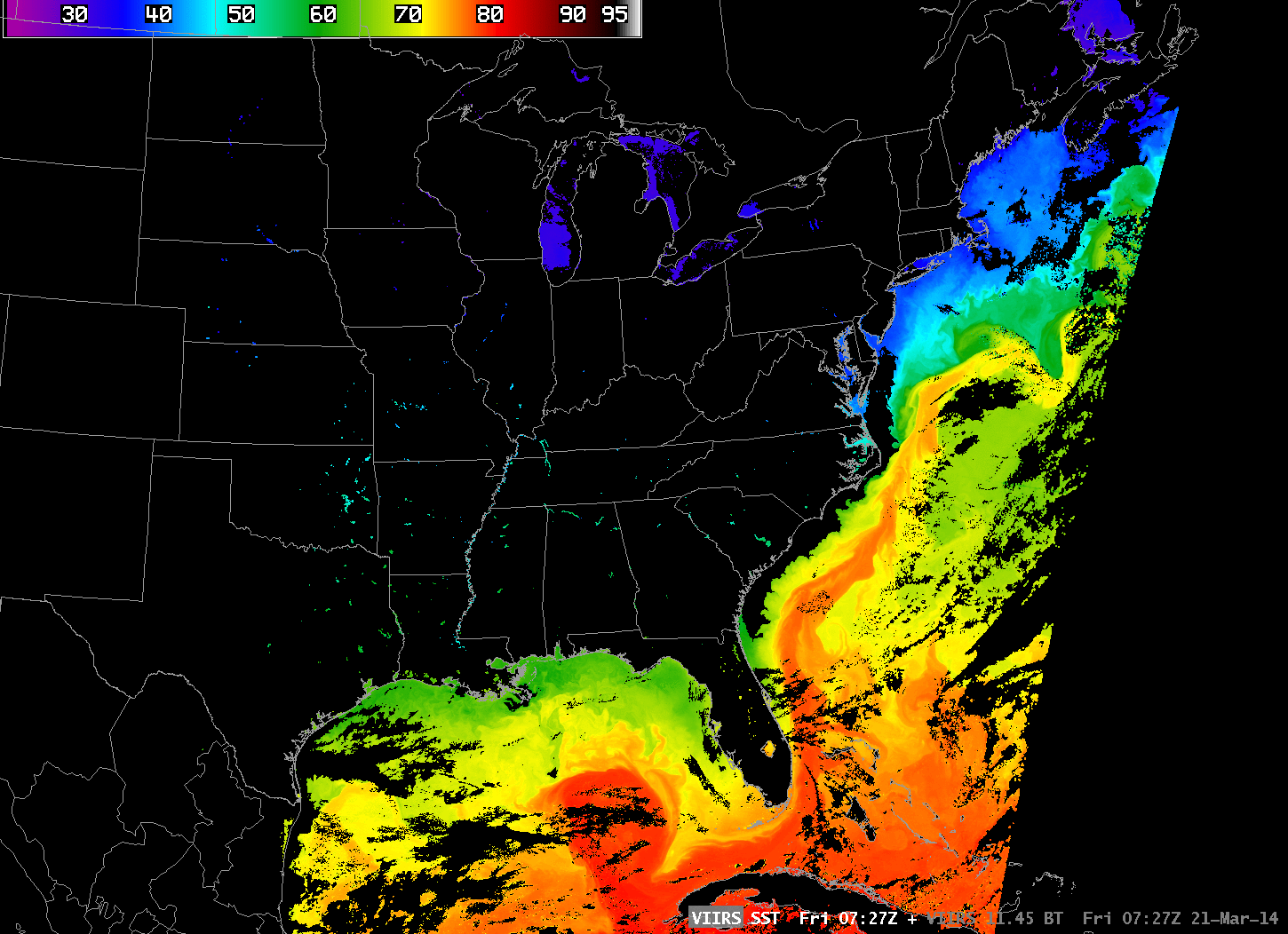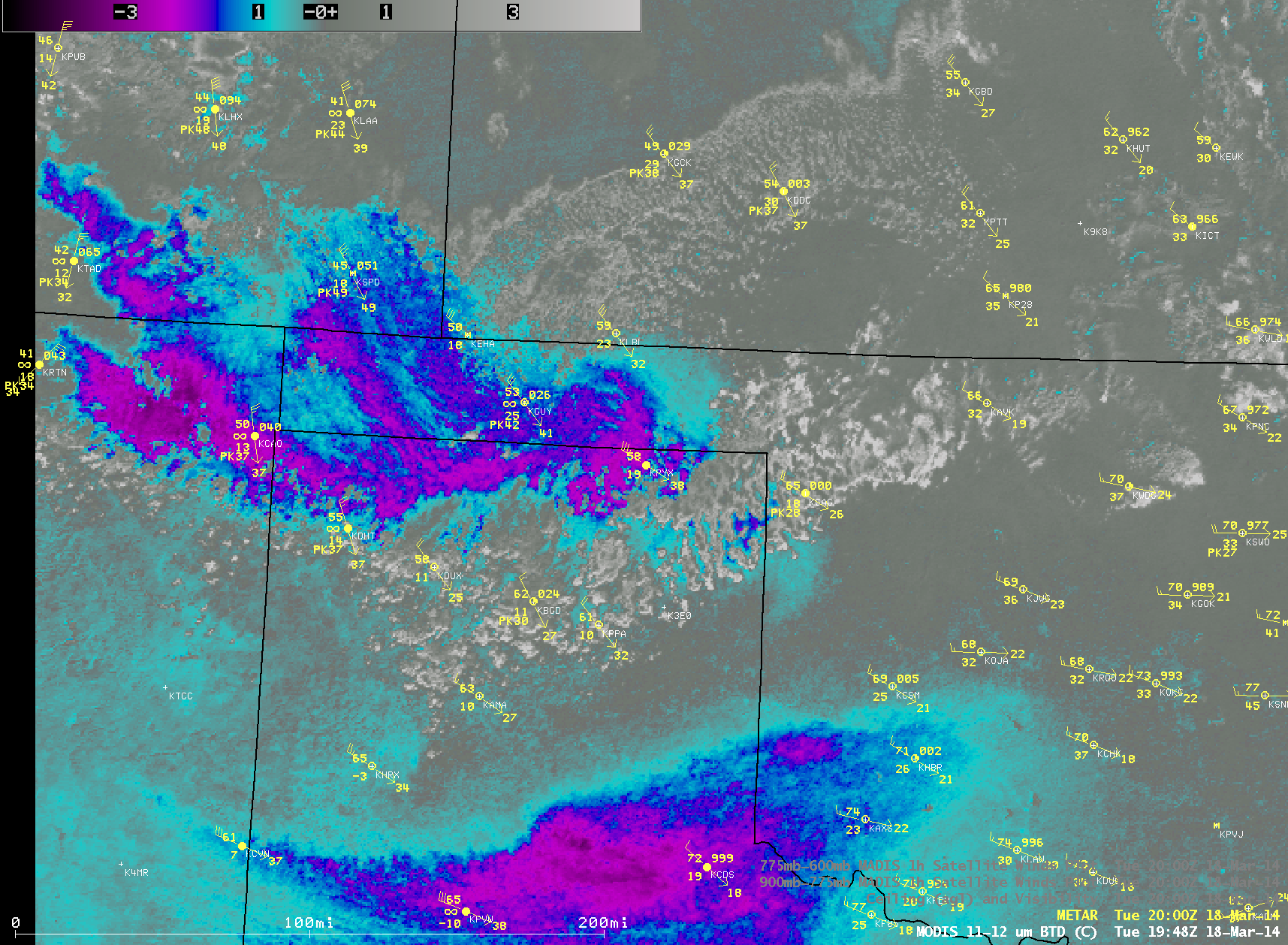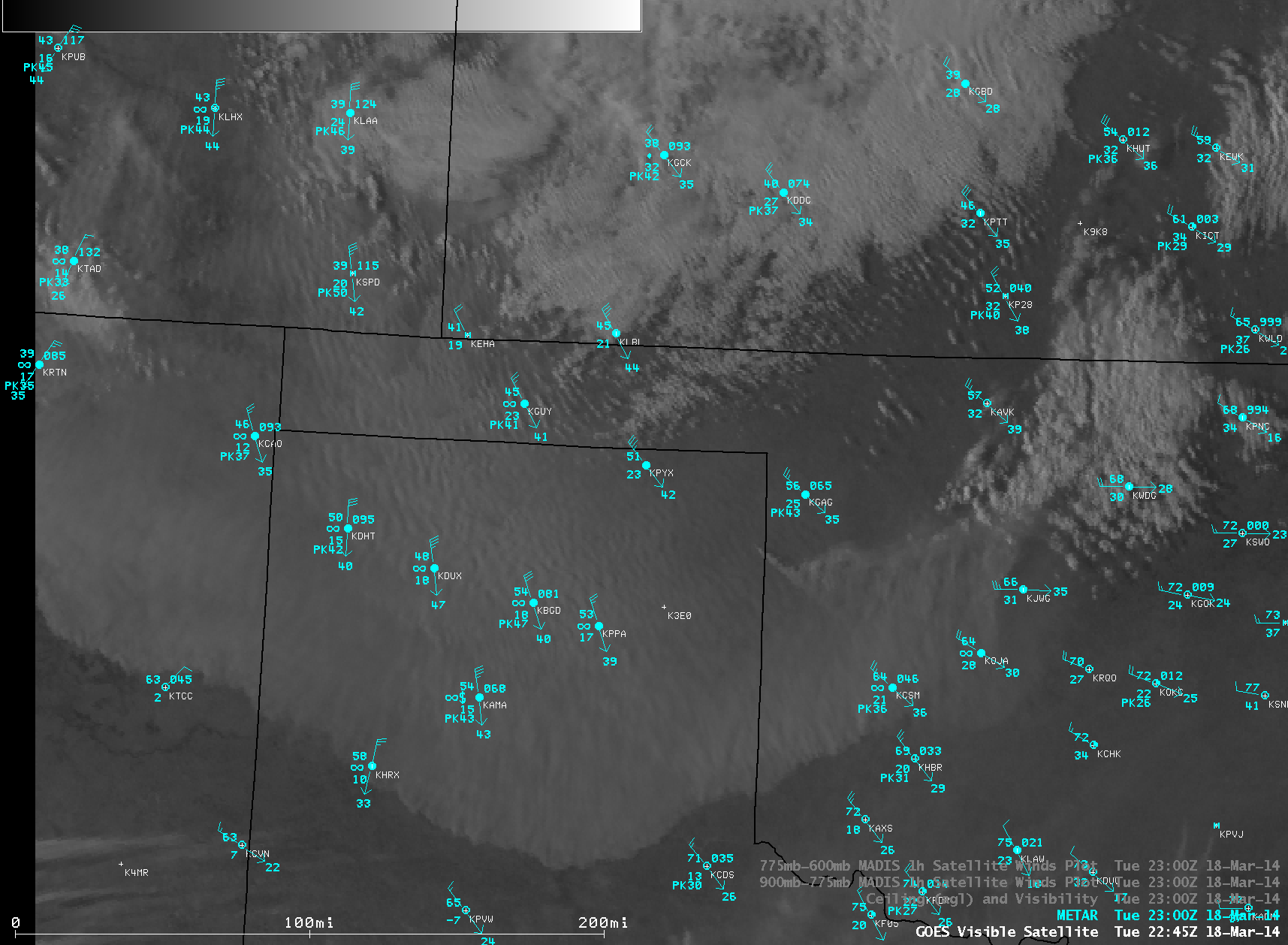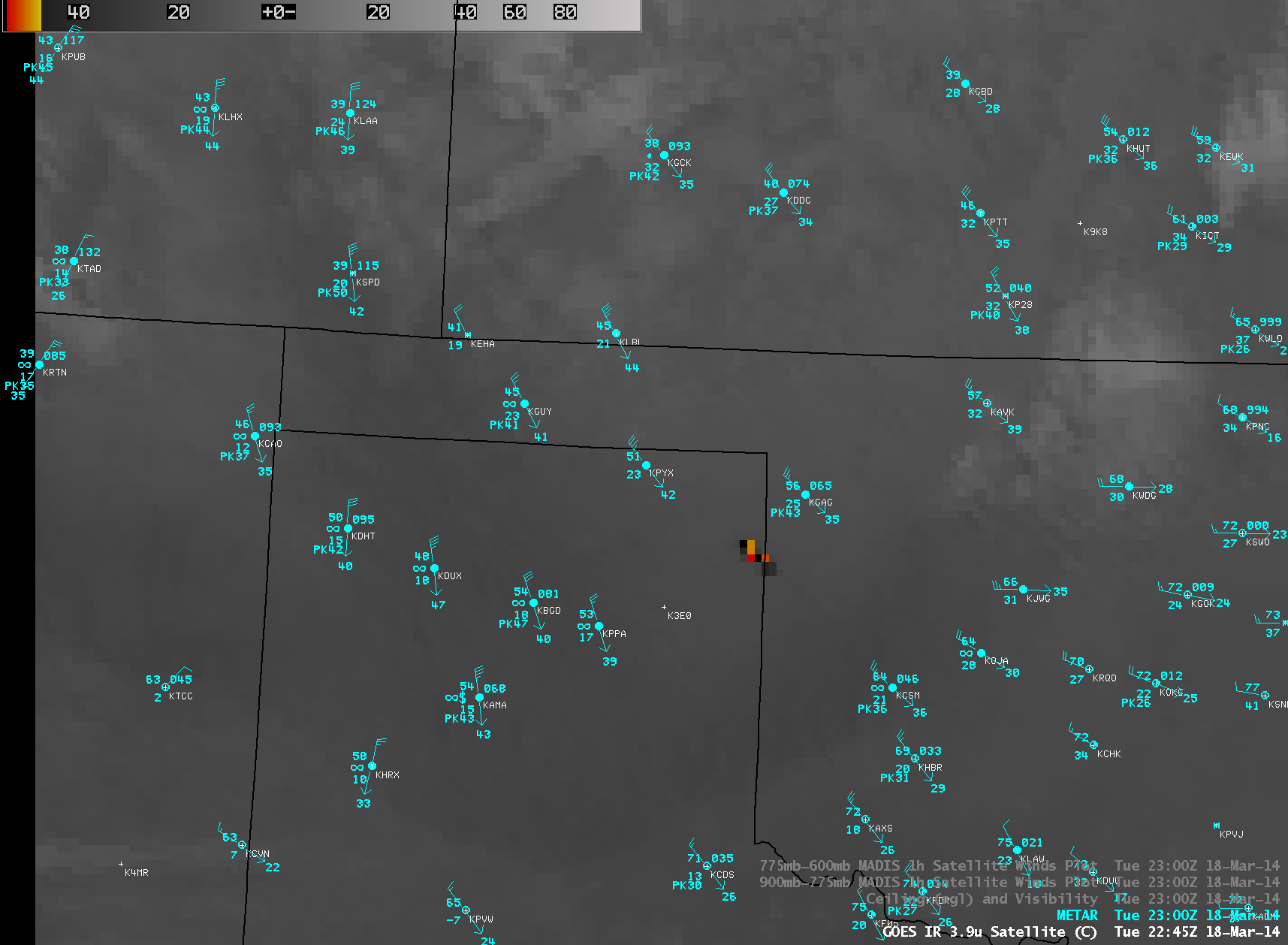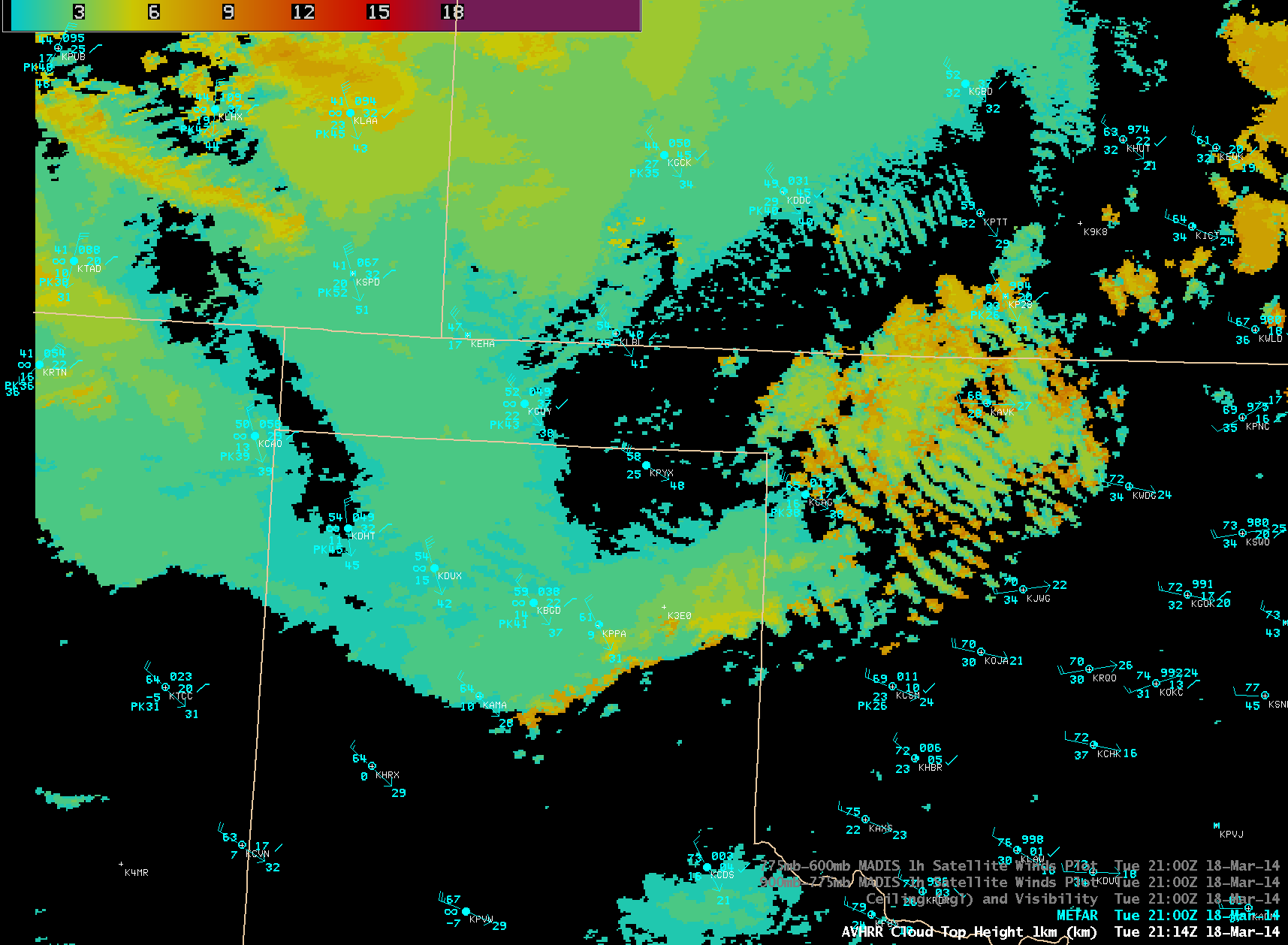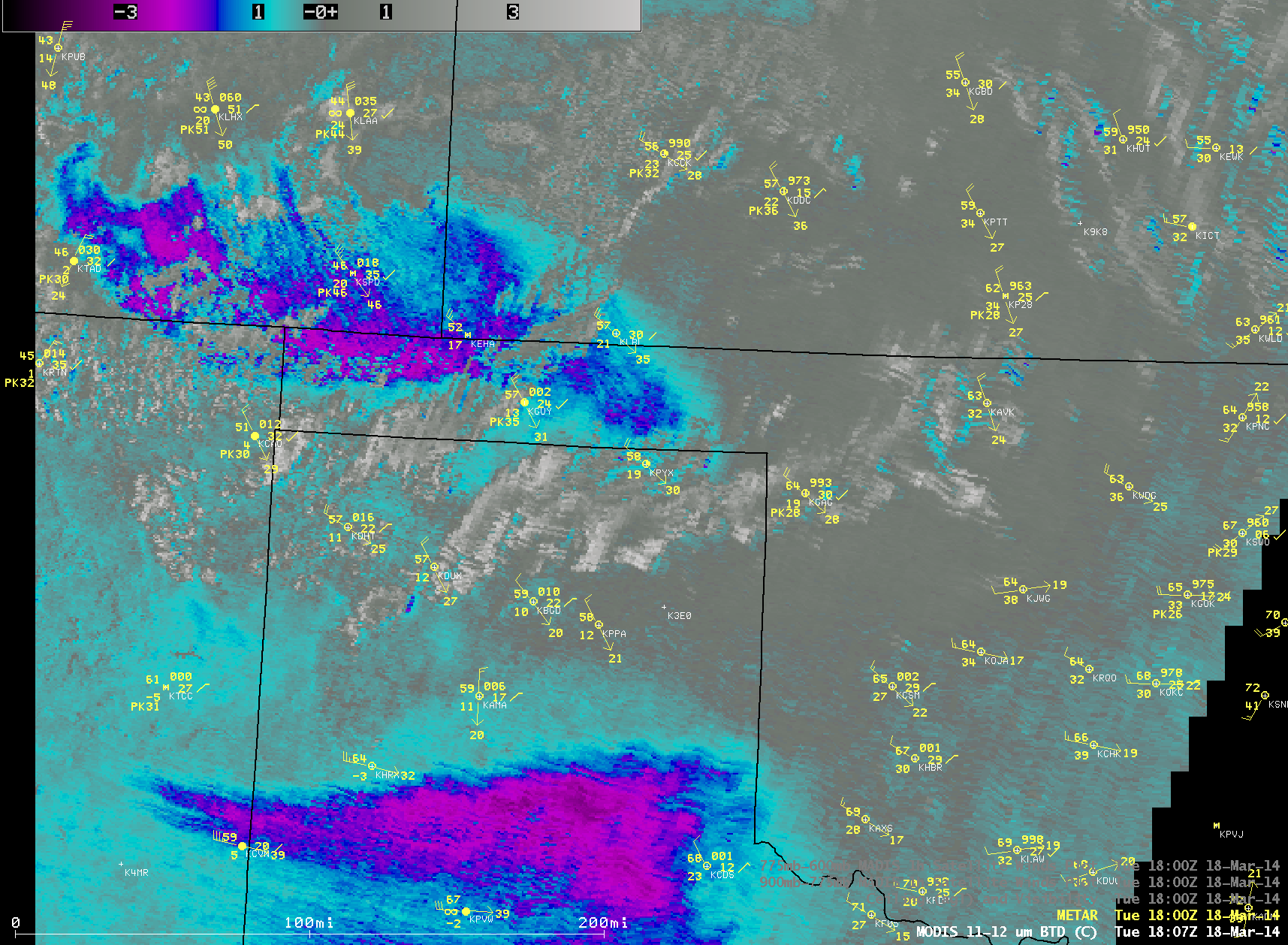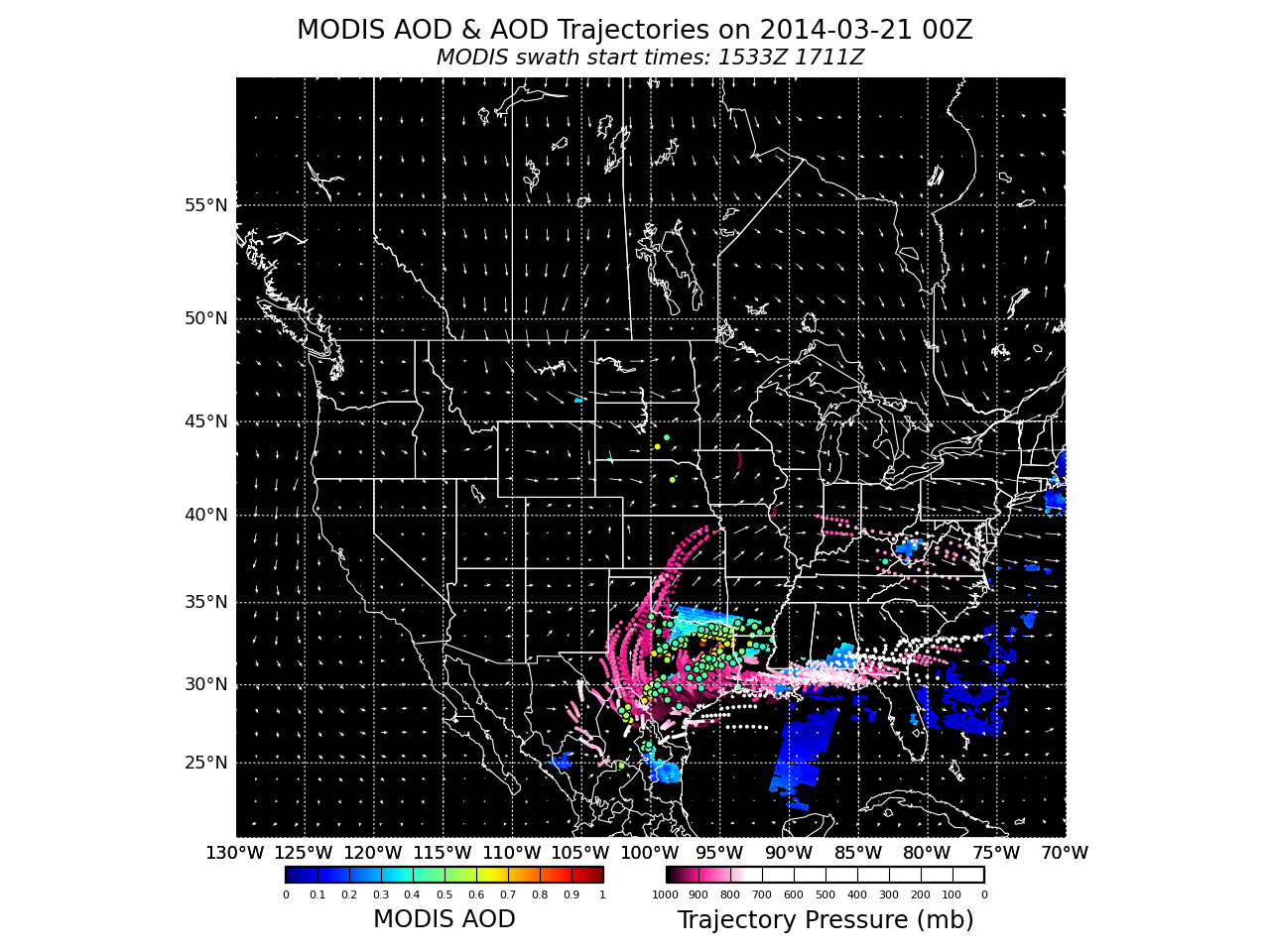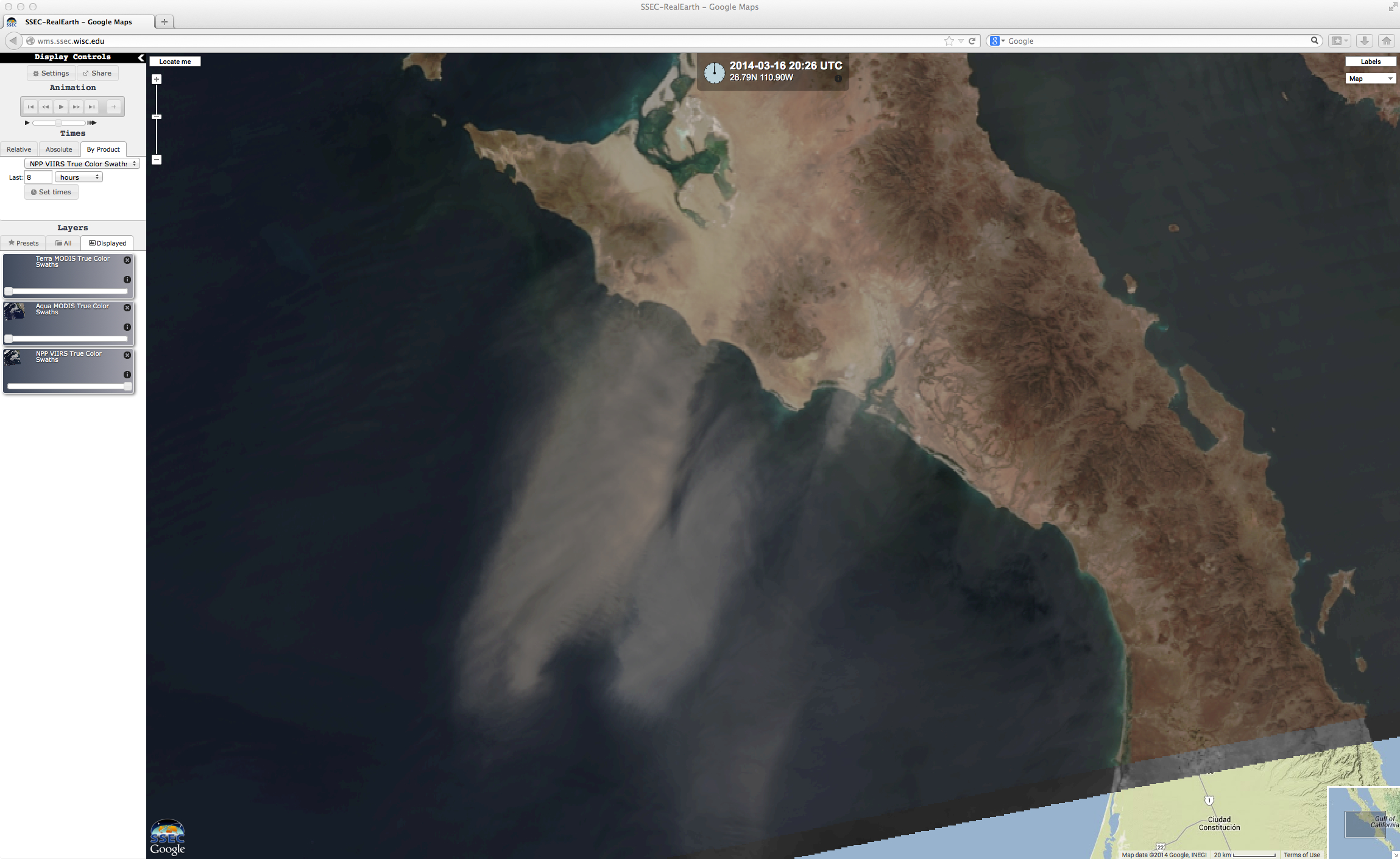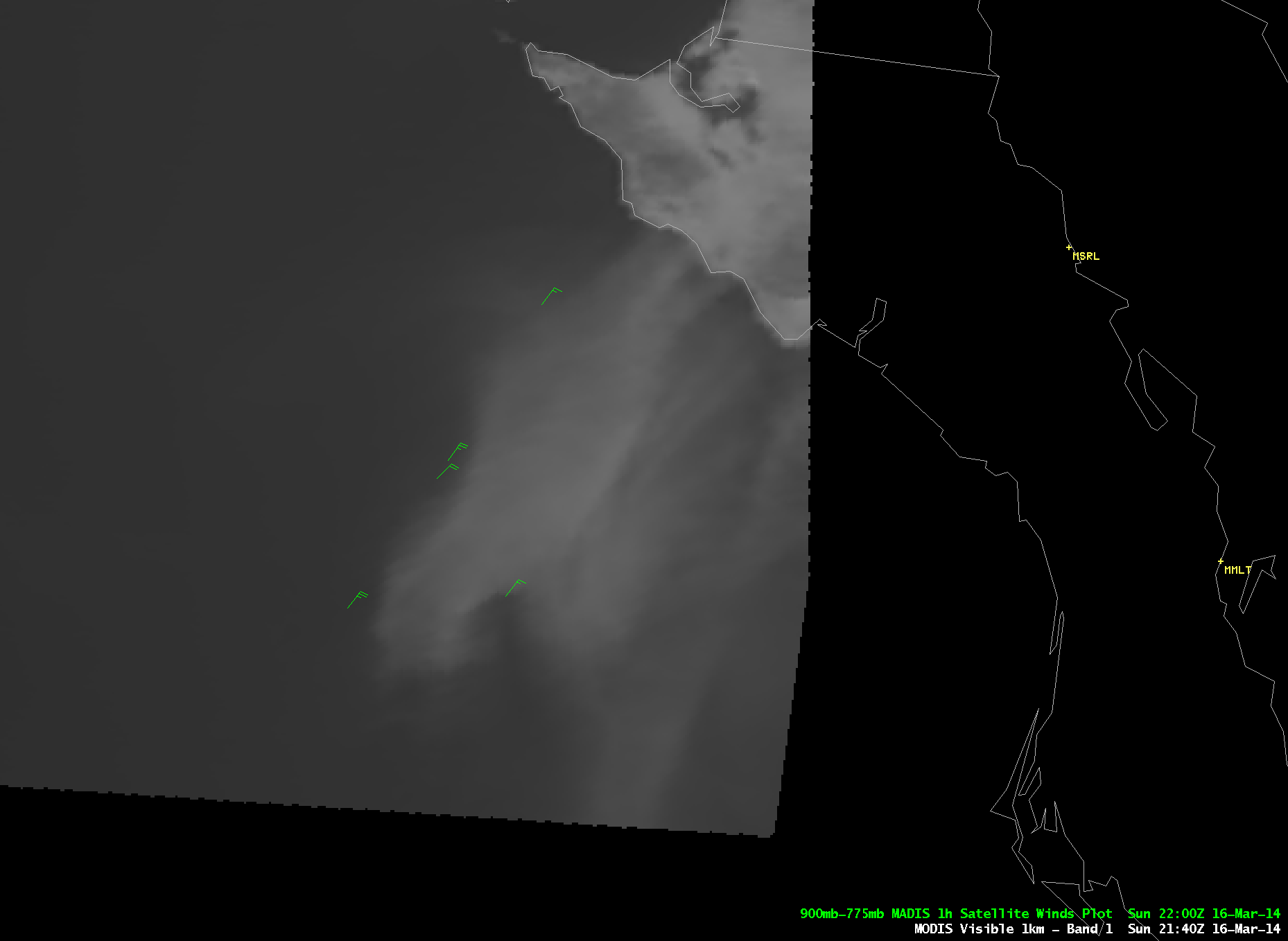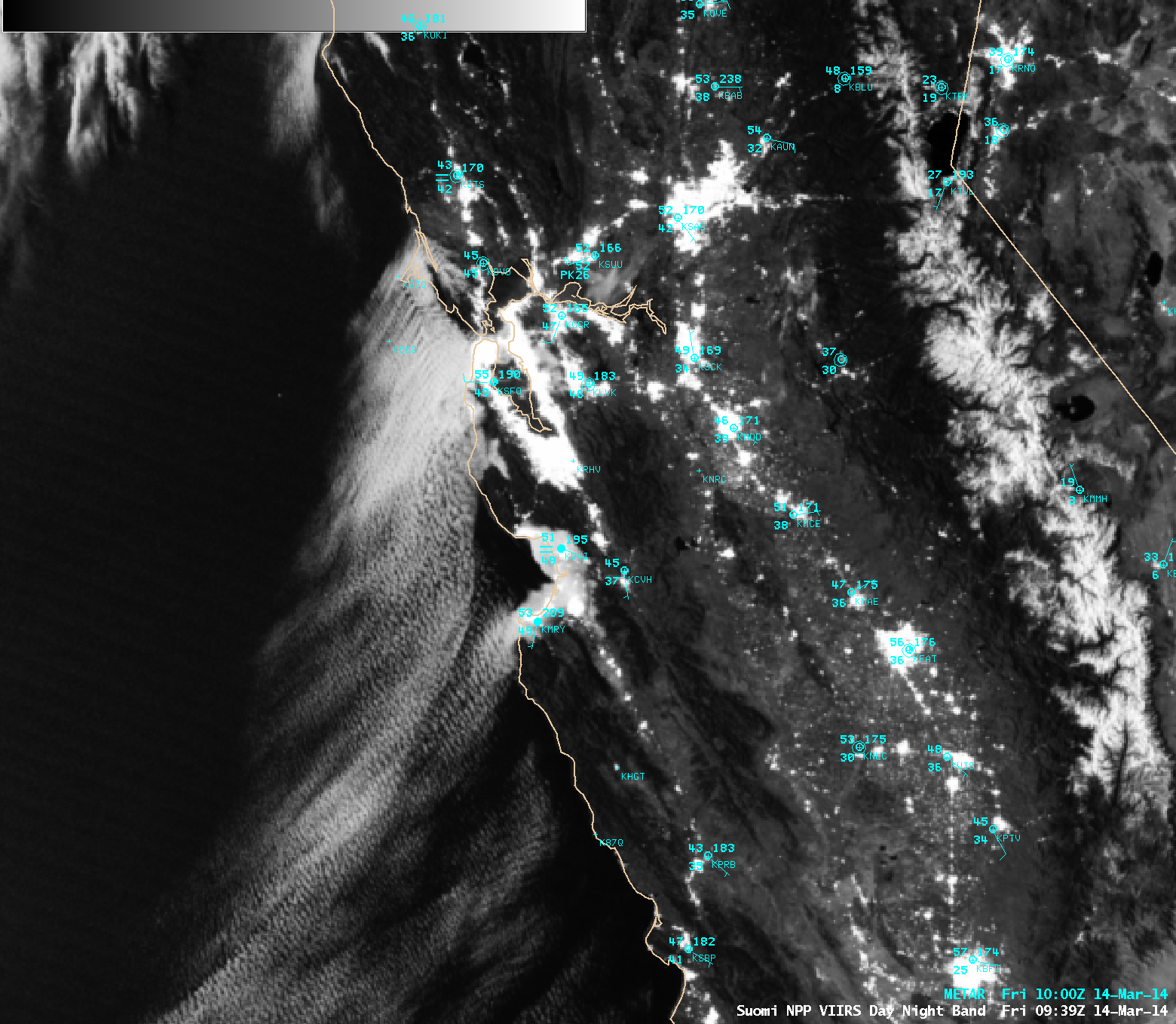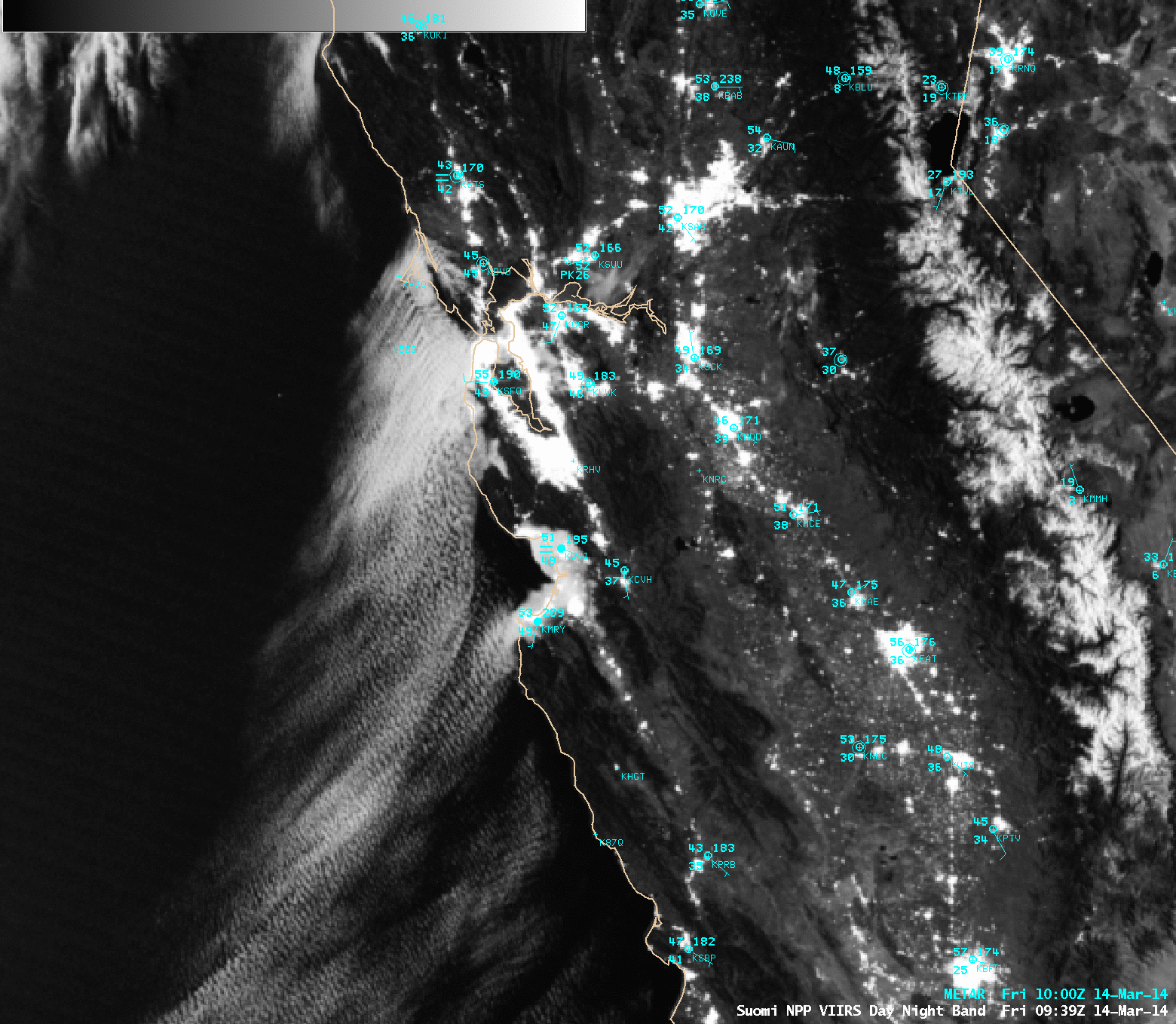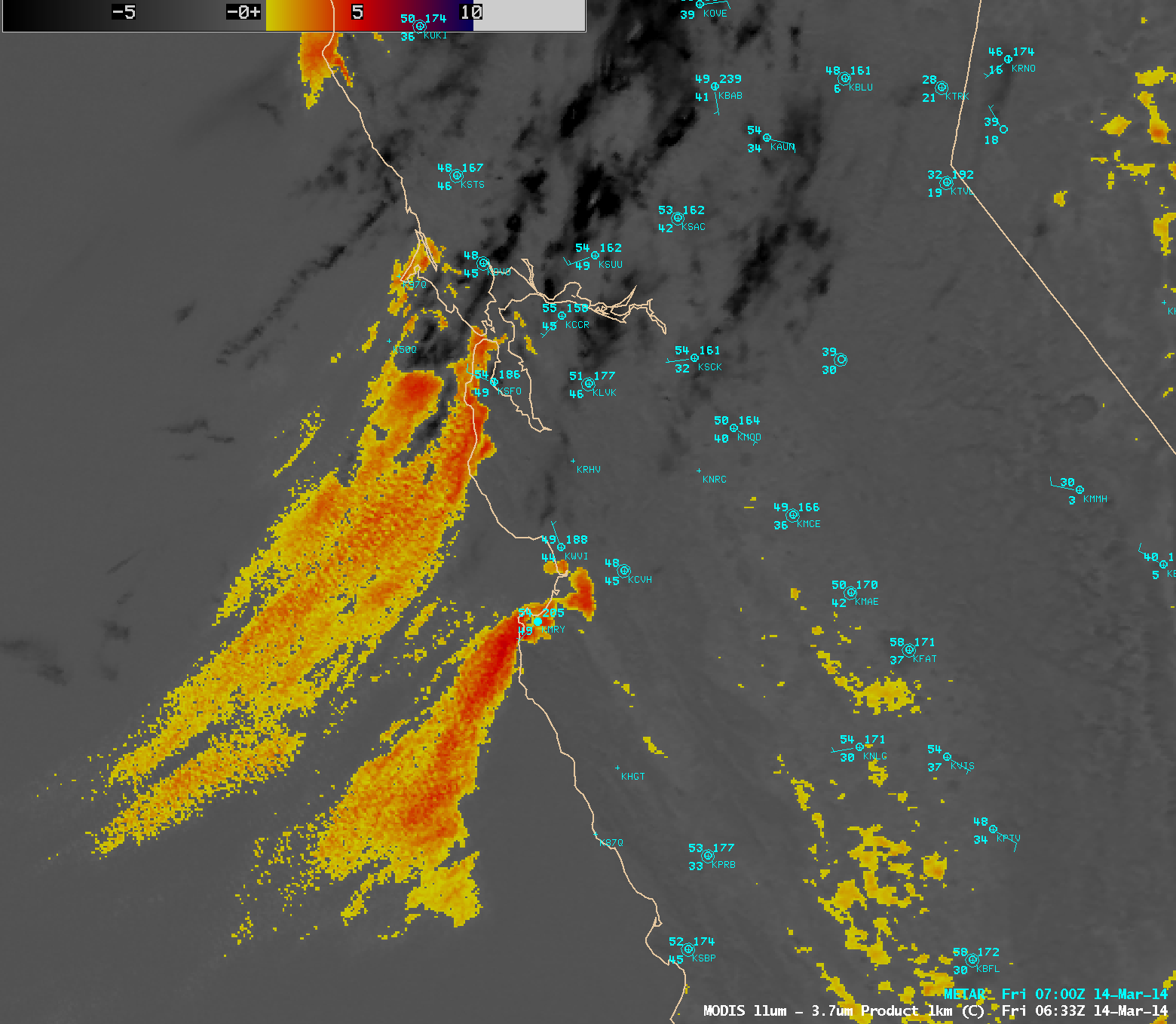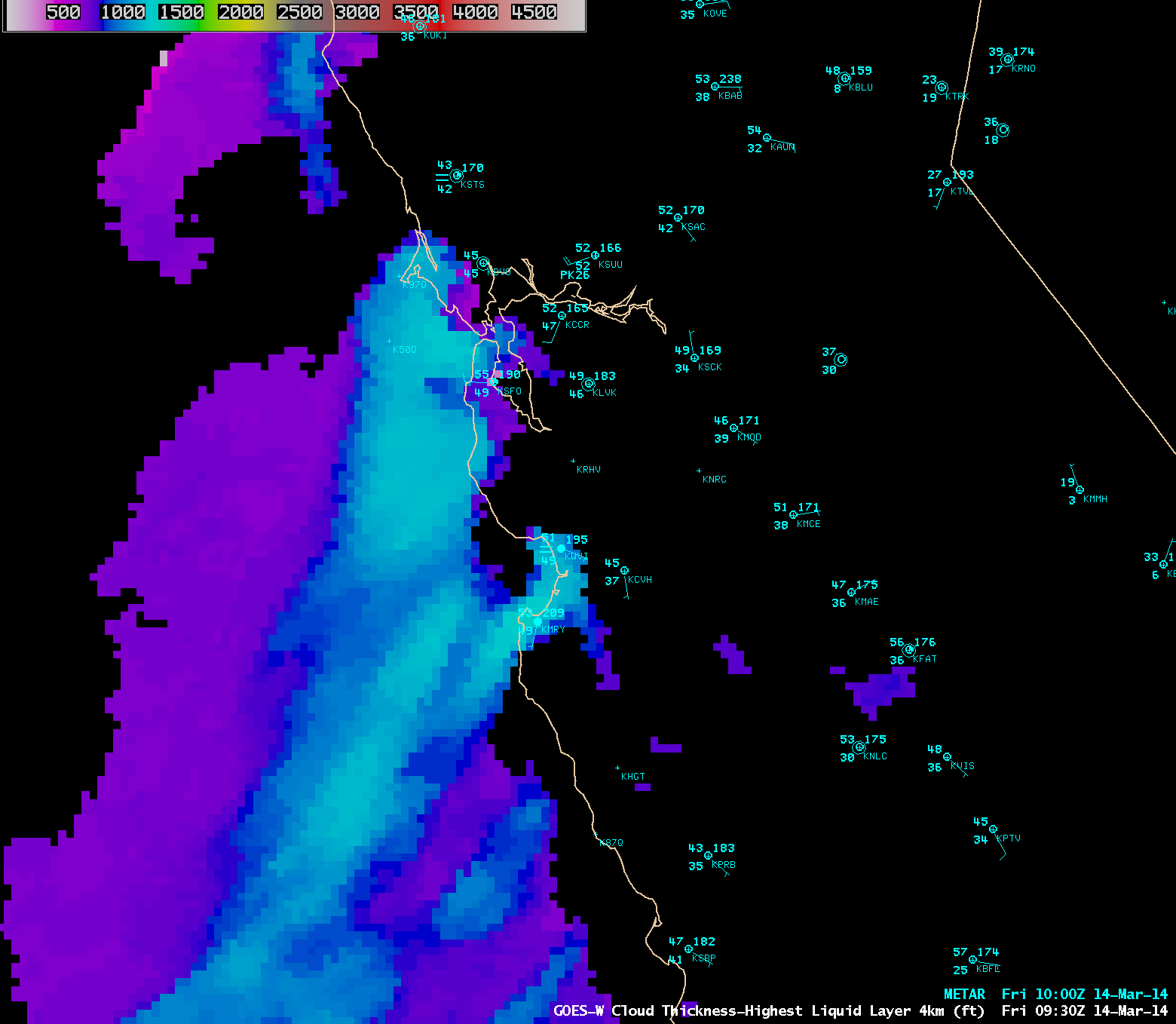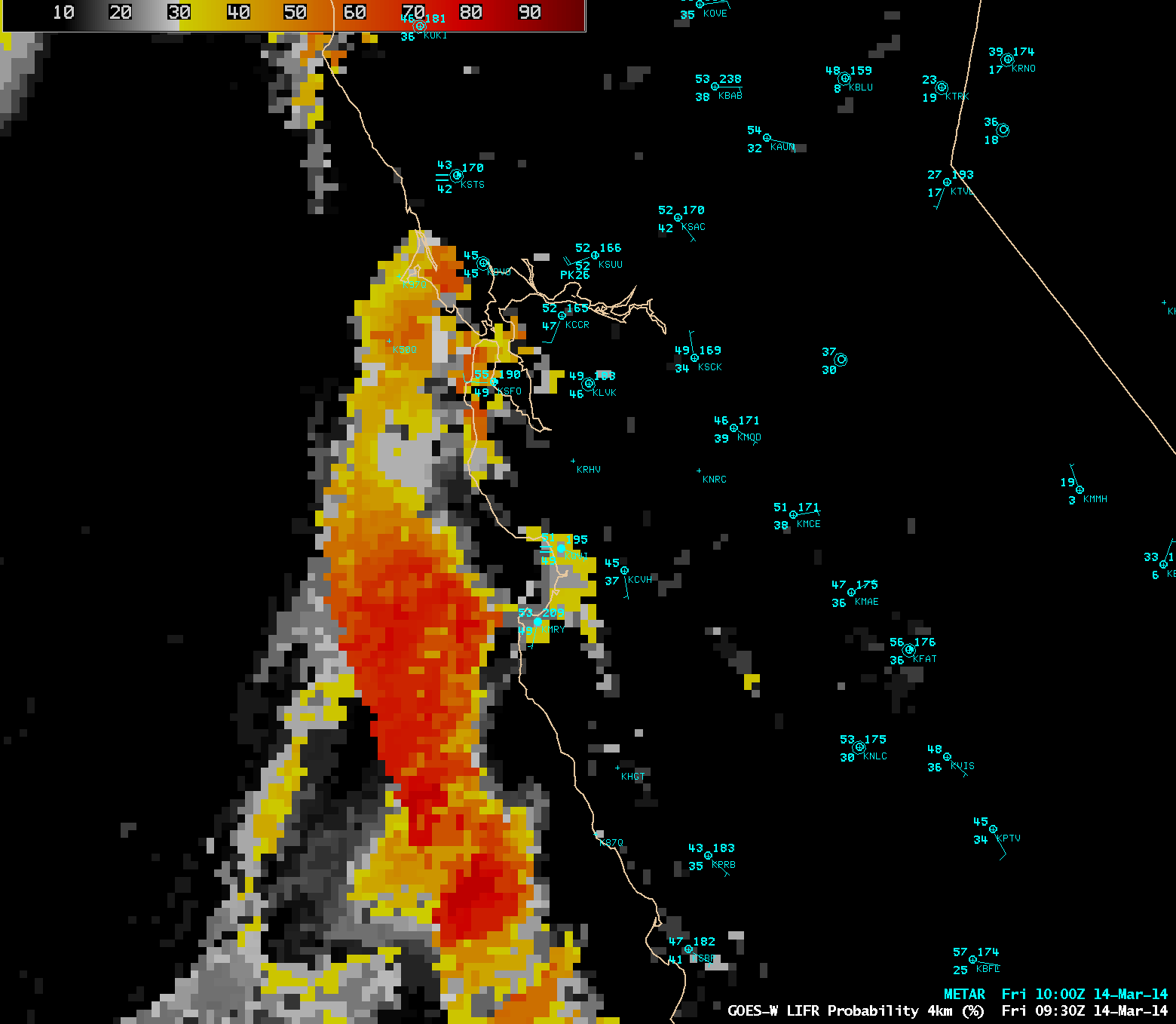Suomi NPP VIIRS data are being used to compute sea-surface temperature (SST), and those fields are now being input into AWIPS for evaluation. The Suomi NPP images as displayed in AWIPS are labeled as MODIS SSTs (this was done to speed the injection process into AWIPS; however, note that the labels on VIIRS images for this blog post were modified to display the correct satellite source). Even though the labels are the same (both MODIS and VIIRS products are labeled “MODIS Sea Sfc Temperature” in AWIPS), the data sources are different, and the user can learn to identify the data being used.
A user can match the time of the image to overpass times for the Aqua, Terra or Suomi NPP satellites. Overlaying a different Suomi NPP image, for example 11.45 µm IR brightness temperature, below, that covers the same geographic region will also tell the user which data source — from VIIRS or MODIS — is being used to construct the SST product.
A MODIS-based SST from approximately the same time is shown below. The VIIRS swath is much wider than the MODIS swath. This will always be true.
Values for MODIS SSTs and VIIRS SSTs are similar. In general, the cloud-clearing with Suomi NPP VIIRS is more accurate, meaning there are more clear pixels with the Suomi NPP data and therefore more SST pixels. Note in particular differences in the strong temperature gradient along the edges of the Gulf Stream where MODIS algorithms mistakenly flag pixels as cloudy.
[Added: This animation cycles through the SSTs and the Window Channel IR images from both VIIRS and MODIS]
2 days earlier, a nighttime/daytime Suomi NPP VIIRS SST comparison on 19 March — magnified to provide a closer look at the Gulf of Mexico (below) — revealed intricate structure associated with the Loop Curent (the large darker red feature, with SST values around 80º F), as well as other small-scale eddys in the surrounding Gulf waters.
View only this post Read Less


